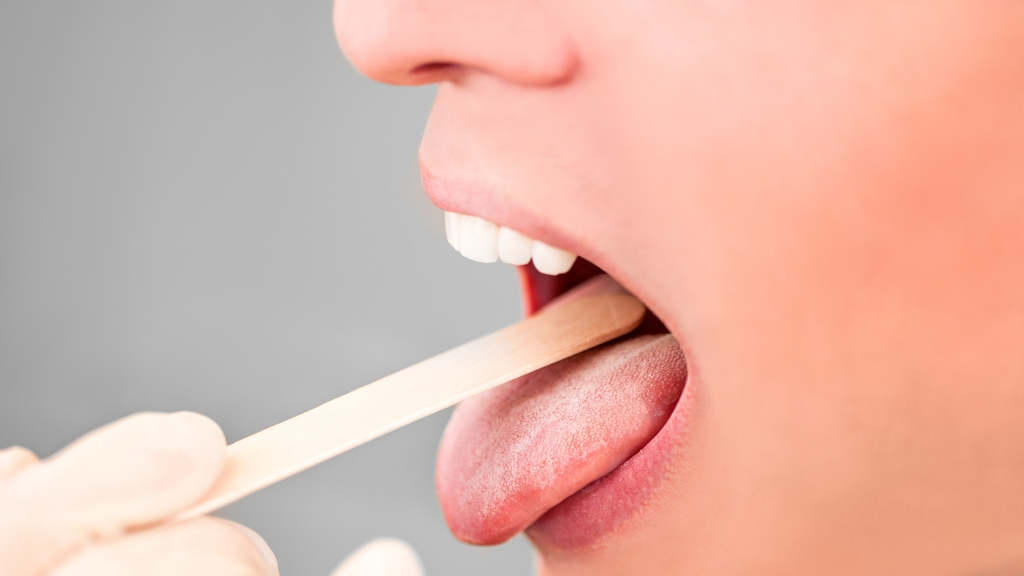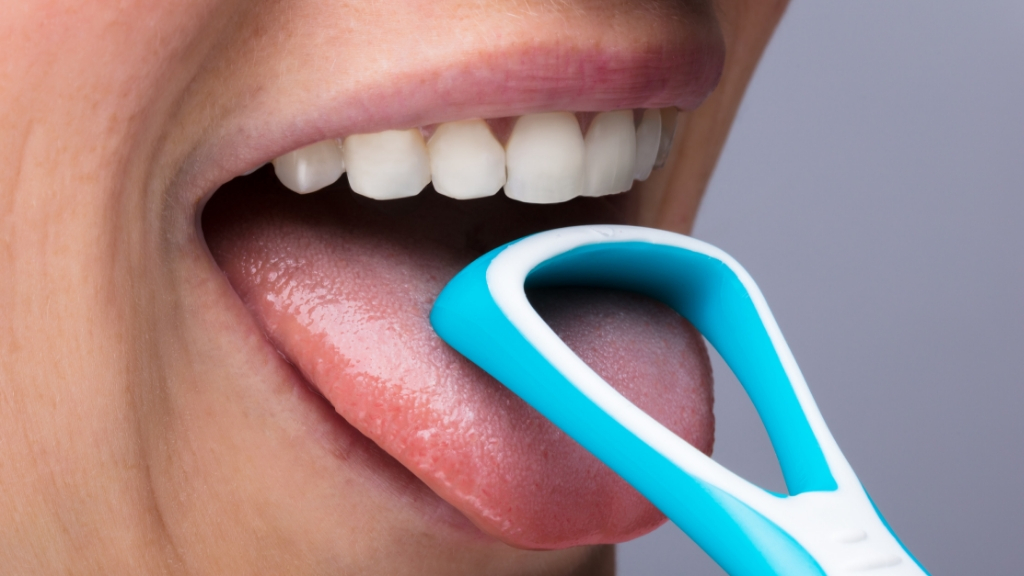We generally depend on our tongue to let us know if something tastes good or not. Our tongue can also alert us to dangers in terms of rotten or poisonous foods or substances that are too hot.
But your tongue is capable of much more than just taste duties. It can give you an insight into your own health.
As it happens, your tongue's size, color, form, and texture of your tongue can be used to diagnose your health. There is a reason why the doctor asks you to stick out your tongue for almost every checkup.
The Tongue Self Check-Up
The best time to look at your tongue is before brushing your teeth first thing in the morning. Ideally, you want to do this in as natural a light as possible.
It is not recommended that you strain your tongue because this can alter the results and what you see.
It’s also important to remember that foods you eat or even medications can have an effect on the color of your tongue, which is why you should always examine your tongue at least an hour after exposure to any of these elements.
The Color of Your Tongue
Who knew that your tongue had such a spectrum? Here are what some of the colors mean.
What a Healthy Tongue Looks Like
Light pink: This is the color of a healthy tongue, and a light white coating is also normal. There should be no cracks, ulcers, or teeth marks, and normal tongue size is medium in terms of thickness.
Papillae are tiny bumps on your tongue that contain taste buds and help you with chewing and speaking. They’re usually the same color as your tongue, but they can become enlarged, which can be caused by a number of reasons. For this reason, it’s important to brush your tongue as a last step in your daily toothbrushing regimen.

When a Tongue Is Unhealthy
Your Tongue Color Is Red
A red tongue is often times an immunity response, indicating the presence of an infectious disease or a part of the inflammatory response.
♦ Glossitis: Inflammation of the tongue that leads to increased blood flow. An allergic reaction, infection, or an acute mechanical or chemical injury can cause this.
♦ Vitamin Deficiencies: A bright red tongue can indicate a B12 iron deficiency, but if you have a cold, it could also be a response to a fever or sore throat irritation.
Your Tongue Color Is Yellow
Yellow discoloration is uncommon, but when it is present, it’s most likely the start of the gradual development of a disease and will likely change to brown and then black.
♦ Poor dental hygiene, smoking, and certain medications can cause a yellow coating on the tongue.
♦ Jaundice: This is associated with liver problems. And though it’s a rare symptom, a yellow tongue could be a sign of jaundice and will likely turn black if left untreated. Jaundice also causes yellowing of the eyes and skin.
Your Tongue Color Is Purple
A purple tongue could indicate that blood isn’t delivering the proper amount of oxygen to your tissues.
♦ Poor Blood Circulation: This is usually a symptom of an underlying condition that, for one reason or another, is sending inadequate amounts of blood, oxygen, or nutrients throughout your body. A purple tongue can be a sign of this, and in the same way can also indicate lung concerns, causing a bluish-purple tint to appear.
♦ Blood Stasis: This is a sign of heart complications associated with stiffness of arteries, and a purple tongue can be an early symptom.
Your Tongue Color Is Blue
A bluish tongue can be caused by blood disorders, diseased blood vessels, kidney disease, and respiratory insufficiency. If you notice your tongue is a bluish color, you may need to seek immediate medical attention.
♦ Cyanosis: A condition caused by not having enough oxygen supply to tissues.

Your Tongue Color Is White
A white tongue is most commonly caused by dehydration and can easily be corrected by drinking more water. Additionally, white tongues can indicate a fungal infection, such as oral thrush or the flu.
♦ Vitamin Deficiency: An obviously pale-colored tongue most likely indicates a vitamin or nutritional deficiency and should be easily rectified with diet changes.
♦ Dry Mouth: This is usually caused by insufficient saliva, which can also cause dry mouth (see below).
♦ Bacteria: Bacteria can build up in the mouth, causing a white film across your tongue.
Your Tongue Color Is Gray
A gray-colored tongue can indicate long-term digestive or intestinal problems.
♦ Bacteria: Typically, the gray color comes from a coating caused by bacterial build-up associated with digestive issues or improper oral hygiene.
The Coating on Your Tongue
A normal, healthy tongue will have a light white coating that can easily be brushed away. Anything thicker or varying in color beyond this can indicate serious health problems requiring immediate attention.
Thick White Coating
While a thick, white coating can form due to drinking too much alcohol (intoxication), it can also indicate an infectious disease.
♦ Oral Thrush: A condition caused by an overgrowth of yeast known as candida. You’’ usually notice other symptoms as well.
♦ Bacteria: A coating on your tongue could be bacteria or dead cells getting trapped between the papillae.
Brown Coating
With time and no treatment, this brown coating can turn black, and you may notice a distinctively hairy feeling across the surface of your tongue.
♦ Heavy coffee drinking and smoking can lead to brown discoloration.
♦ Lung Concerns: A permanent brown coating can indicate lung problems and is often seen in chronic smokers.

Yellow Coating
A thick, yellow coating indicates digestive issues and specific problems with your stomach, gallbladder, or liver. Foods can also cause temporary yellowish coating, so be sure to examine your tongue about two hours after eating.
♦ Gastritis: Inflammation of the lining of your stomach can cause a yellow tongue.
♦ Autoimmune Diseases: Those with weak immune systems or autoimmune conditions are more likely to develop a yellow tongue.
Gray Coating
Similarly to a gray tongue, digestive issues generally cause a gray coating to appear on the tongue.
♦ Peptic Ulcer: A sore on the lining of your stomach, small intestine, or esophagus could cause a gray-coated tongue.
When to See a Doctor
The tongue may indicate something more serious lurking within, but ultimately your doctor must make the final diagnosis. It’s generally a good idea to consult with a doctor if changes last longer than two weeks and if there is pain or swelling.
The Bottom Line
It is important to remember that even though your tongue can tell you a great deal about your health, it is not always 100 percent accurate. Aggressive food can injure the tongue, which allows bacteria to enter through a small wound and leads to temporary irritation.
Not every color change is going to indicate internal disease. However, if you have concerns about your tongue color or coating, speak to your physician before rushing out to self-medicate.






